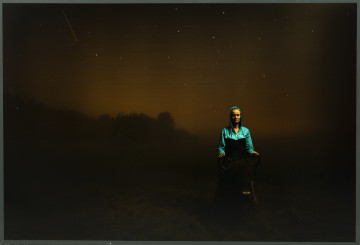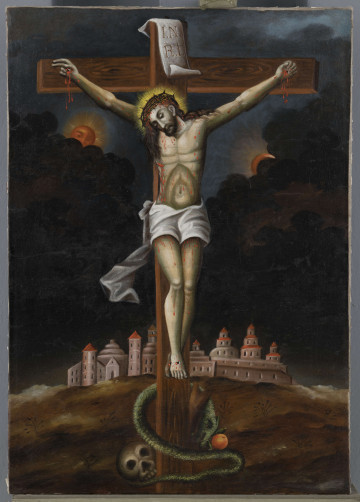
Identyfikacja | Identification
1980
National Museum in Szczecin
Part of the collection: European classics of modernity
Kazimierz Pochwalski studied at the School of Fine Arts in Kraków between 1903 and 1908. In 1877, he undertook a year's study at the Bavarian Royal Academy of Fine Arts in Munich under the guidance of Alexander Wagner and Otto Seitz. Between 1883 and 1884, he studied in Paris (in the studio of Léon Bonnat) and in 1881 in Rome. Between 1894 and 1918, he was a professor at the Imperial and Royal Academy of Fine Arts in Vienna. The painting from the collection of the National Museum in Szczecin comes from the early period of the artist's career. At the time, he took up historical and literary themes inspired by Jan Matejko's works. An example is Aldona w wieży [Aldona in the Tower], which depicts a character from the poem Konrad Wallenrod by Adam Mickiewicz, one of the greatest Polish Romantic poets. It is the story of love between Aldona and Walter Alpha, whom the Teutonic Order kidnapped in his youth. When he returned to Lithuania, where he came from, he fell in love with Aldona, whom he married. However, the threat of war and attacks by the Teutonic Order disrupted their peace. Walter decided to leave his wife and go to war with the enemy; Aldona followed her husband to Malbork. She believed that she would still meet him there. Once there, she asked to be locked in a tower and have the door bricked up. She decided to contact the world only through the window. After ten years, a knight named Konrad Wallenrod came to the castle and came every night to talk to her. It is this moment that Pochwalski decided to capture in his work. Aldona is sitting at the window with her eyes closed and in thought. The artist has skillfully rendered the poetic nature of this scene through his use of light. The gloomy chamber is painted in shades of browns, greys, greens and blues, which are so dark that they merge into one colour. The heroine's dress also blends with the interior. Aldona's radiant but tired face contrasts with the background; it is the only face painted clearly because it is supposed to attract attention. How the mood is built up through the introduction of contrasting parts, illuminated and engulfed in darkness, results from the influence of the Munich masters and at the same time confirms that the artist belonged at that time to the so-called Polish Munich school.
Beata Małgorzata Wolska
Author / creator
Dimensions
cały obiekt: height: 53 cm, width: 40 cm
Object type
painting
Creation time / dating
Creation / finding place
Identification number
Location / status

1980
National Museum in Szczecin

2011
National Museum in Szczecin

1890 — 1910
National Museum in Lublin
DISCOVER this TOPIC
Museum of King Jan III's Palace at Wilanów
DISCOVER this PATH
Educational path